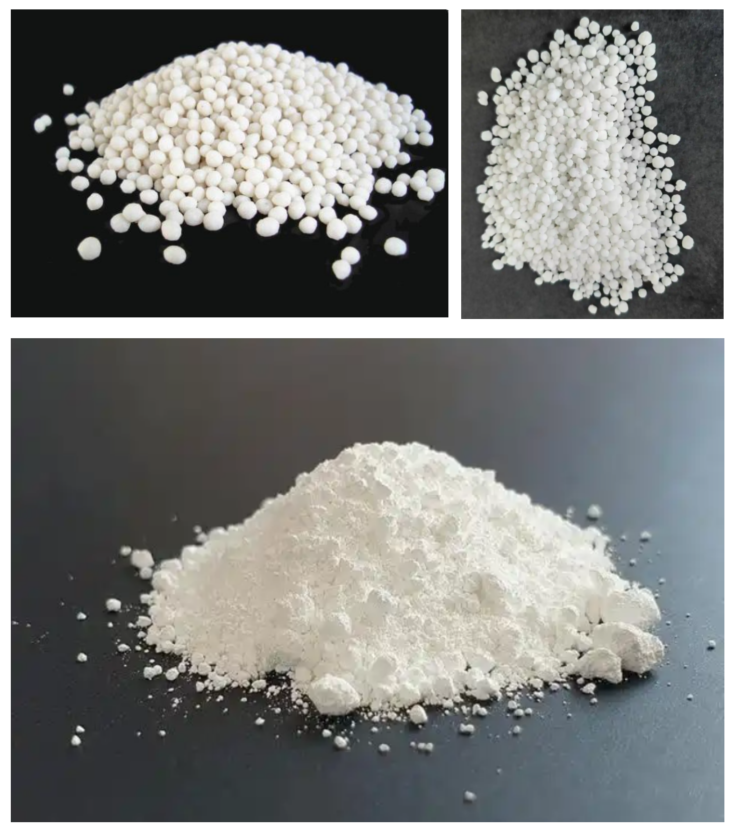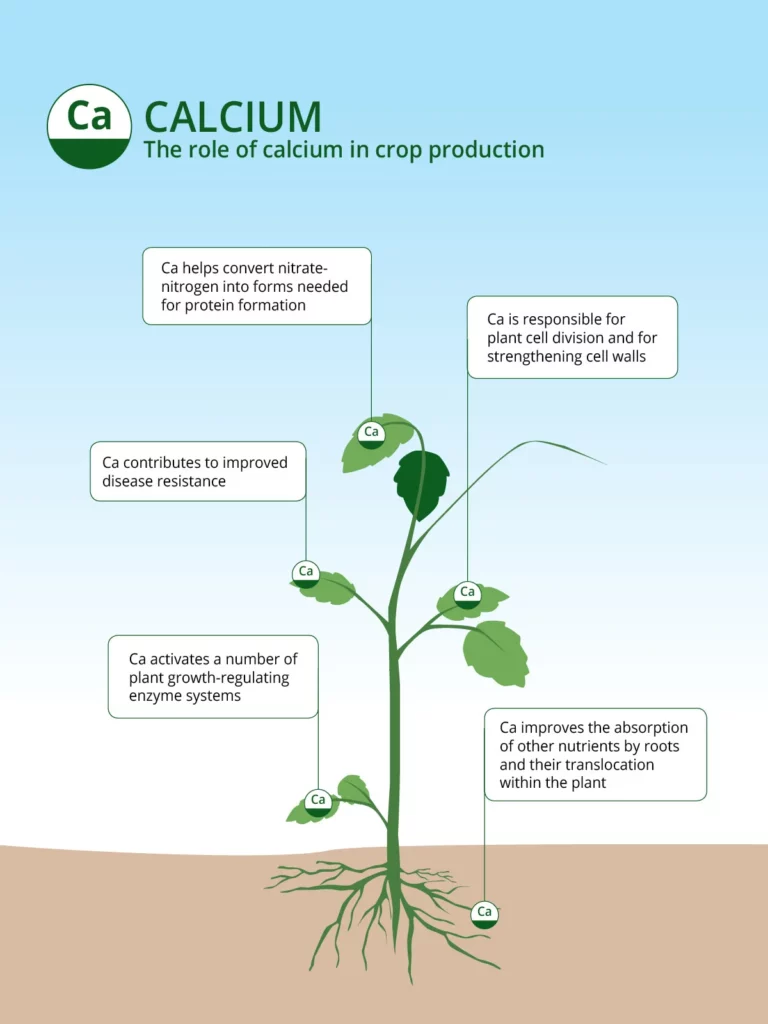Calcium is one of the most important and effective elements in the growth and improvement of productivity and quality of agricultural crops.
Calcium element is a slow-moving nutrient in both plant and soil. And the calcium element movement is in one direction, from bottom to top, and is linked to the movement of transpiration and the water column. It needs additions of this element either as soil and foliar application in the same time. The absorption of calcium by young fruits is several times than older fruits, which necessitates to use of calcium in the early stages of fruit life.
Calcium is found in different forms of compounds, such as liquid calcium nitrate,soluble calcium nitrate, granulated calcium nitrate, and calcium chloride.

Calcium play a vital role in fertilization programs as follows:
1-The role of calcium in improving soil structure and reducing salt content
Under the conditions of saline soils and water in which contains high amount of sodium and chloride ions. In addition, sodium is considered one of the chemically active elements that, leads to breakdown of the layers between the soil particles, which in turn leads to the dispersal of the soil particles and the soil structure with lack of permeability and poor drainage. The use of the calcium element leads to a reduction from the harmful effect of salts in the soil by replacing sodium with calcium, which leads to improving soil structure, improving aeration and soil permeability, and improving drainage.
2-The role of calcium in improving the growth of roots and meristematic parts of the plant
Calcium plays a vital role in the formation of the middle lamella, which is the basic layer for formation of cell walls, where pectic acid reacts inside the plant to form insoluble calcium pectate, which is considered the main component of the middle lamella inside the plant. Hence, the importance of calcium in the active, fast-growing parts such as the stem meristem and root hairs is also clear. In addition, root hairs receive high concentrations of calcium to speed up the growth and development of these hairs and increase their ability to penetrate soil particles, which leads to the formation of a strong root system, Subsequently leads to increased plant stability and increased efficiency of absorption of nutrients while increasing the ability of the root system to resist fungal, bacterial and nematode diseases found in the soil.
3- The role of calcium on pollination, fertilization and increasing fruit set and reducing fruit drop.
Calcium is one of the most important elements necessary for the plant, especially during pollination and fertilization, because it has an important role on pollen grains germination, increases pollen tube growth and increases ovules viability. The presence of high concentrations of calcium in the petioles of the fruits reduces the formation of abscission zone that form in the petioles of the fruits. Hence, increasing the number of fruit set, reducing the percentage of fruit drop, and increasing yield and improving quality of fruit.
4-The role of calcium in physiological disorder diseases.
Calcium is considered one of the most important and necessary nutritional elements in the resistance of fruits to physiological disorder diseases, such as cracking in citrus and pomegranates fruits, blossom end rot in tomatoes and peppers, and bitter pit in apples. These diseases appear as a result of a deficiency of calcium in fruits, especially in the early stages of fruits, where the presence of calcium leads to an increase in cell division, and final size of fruits. Hence, increased calcium concentrations in the fruits also lead to an increase in fruits’ resistance to fungal, insect and bacterial diseases, while increasing their storage ability.




